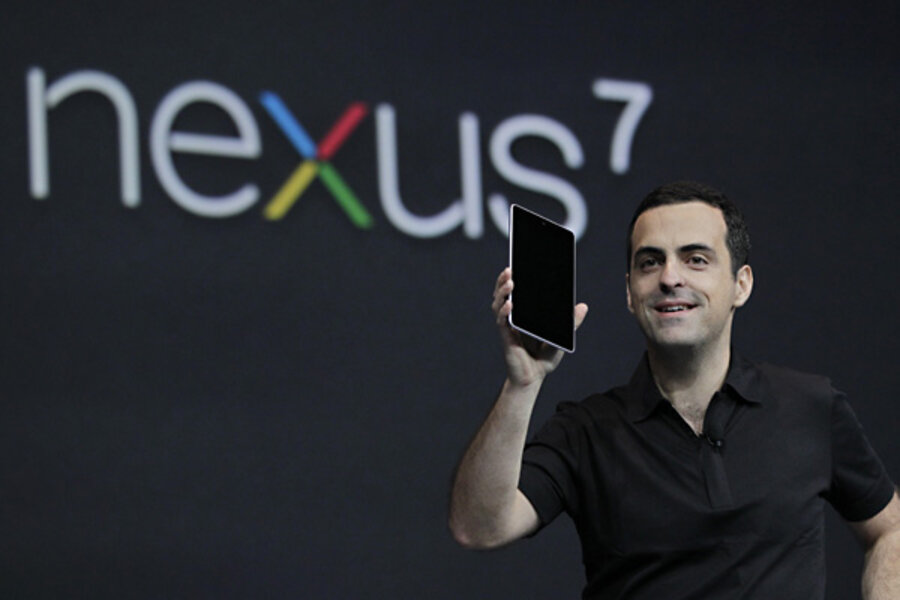Google tablet: How it measures up to iPad, Nook, and others
Loading...
Google Inc. said last week that it will sell its own tablet computer, the Nexus 7, based on its Android operating system.
Google is the latest challenger to Apple, maker of the popular iPad. The new tablet will also compete with Amazon.com Inc.'s Kindle Fire and Barnes & Noble Inc.'s Nook Tablet.
Here's a look at the key differences between those devices.
Google Inc.'s Nexus 7
— Price: $199 for 8 gigabytes of storage, $249 for 16 GB.
— Screen size: 7 inches diagonally
— Screen resolution: 1280 x 800 pixels
— Weight: 0.75 pounds
— Cameras: Front-facing, 1.2 megapixel camera
— Battery life: 9.5 hours
— Operating system: Google's Android
Pros: Access to a variety of games, utilities and other software for Android devices, though not as extensive as apps available for iPad. More features than Kindle Fire at same price.
Cons: Integrates with Google Play store, which is still new and isn't as robust as Apple or Amazon's stores. Data storage cannot be expanded with memory cards. No option for cellular wireless broadband.
Amazon.com Inc.'s Kindle Fire:
— Price: $199 for 6 gigabytes of storage
— Screen size: 7 inches diagonally
— Screen resolution: 1024 by 600 pixels
— Weight: 0.9 pounds
— Cameras: none
— Battery life: 8 hours.
— Operating system: Modified version of Google's Android
Pros: Cheap and portable. Convenient access to Amazon store.
Cons: No-frills tablet lacks camera and microphone. Small selection of third-party applications available from Amazon. Data storage cannot be expanded with memory cards. No option for cellular wireless broadband.
Barnes & Noble Inc.'s Nook Tablet:
— Price: $199 for 8 gigabytes of storage, $249 for 16 gigabytes
— Screen size: 7 inches diagonally
— Screen resolution: 1024 by 600 pixels
— Weight: 0.9 pounds
— Cameras: None.
— Battery life: 11.5 hours.
— Operating system: Modified version of Google's Android
Pros: Cheap and portable. Storage is expandable with microSD memory cards. Easy access to Barnes & Noble book store.
Cons: Selection of third-party applications is small. Barnes & Noble lacks wide range of content. Lacks cameras and option for wireless broadband.
Apple Inc.'s iPad:
— Price: Starts at $499 for 16 gigabytes of storage, goes up to $699 for 64 gigabytes, more for versions with cellular data access. (Apple still sells the older, iPad 2 for $399.)
— Screen size: 9.7 inches diagonally
— Screen resolution: 2048 by 1536 pixels
— Weight: 1.44 pounds
— Cameras: 5-megapixel camera on back and a low-resolution camera on front, for videoconferencing
— Battery life: 10 hours.
— Operating system: Apple's iOS
Pros: Unmatched access to third-party applications, high-quality Apple software and the iTunes store. High-resolution screen. Widest range of cases and accessories available. Available with access to fast 4G wireless broadband networks.
Cons: Relatively expensive. Data storage cannot be expanded with memory cards.







